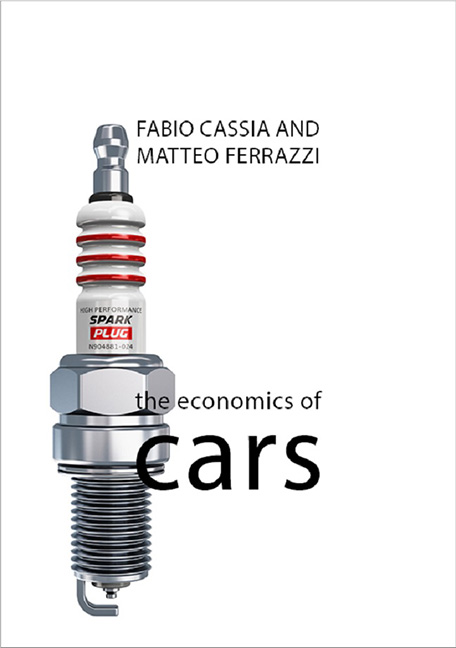1 - The Automotive Industry: A Source of Technological and Managerial Innovation
Published online by Cambridge University Press: 24 August 2023
Summary
“We want to hymn the man at the wheel, who hurls the lance of his spirit across the Earth, along the circle of its orbit.”
Filippo Marinetti, Futurist Manifesto (1909)Cars are not simply a means of transportation: they are icons of style, status and affluence. They reflect consumers’ preferences and have always had a prominent place in the collective imagination due to their technology, the mobility they enable, the opportunity for travel and leisure and the enduring fascination with motorsport and racing. The automotive industry means something more than other manufacturing industries.
The history of the manufacturing industry and the history of the automotive industry were strongly intertwined throughout the twentieth century and such ties will probably remain highly relevant in the future. Vehicle production – including passenger cars, light commercial vehicles and heavy trucks – has driven the industrial development of many countries on several continents and has been a source of incessant innovations and technological improvements. Hence, the automotive industry has become an emblem of industrialization itself.
The automotive industry’s role in the economy cannot be compared with any other manufacturing industry. If it were a country, it would be the fourth largest economy in the world. The size of the industry’s revenues – estimated at $3,500 billion and projected to reach $6,700 billion by 2030 (McKinsey 2016) – is comparable to Germany’s gross domestic product and is greater than that of the UK, France, India and Brazil. Moreover, the industry employs approximately 9 million direct workers all over the world.
The automotive industry not only encompasses vehicle production. More than 15,000 parts and components are required to assemble a single vehicle and several industries are involved in their production, such as steel, glass, plastic and rubber, textile and electronics. According to available estimations (OICA 2017) each direct automotive sector job supports at least another five jobs in the supply chain.
The economic importance of the automotive industry is even greater if one considers not just vehicle production but also services related to sales, marketing and maintenance throughout vehicle life. Before reaching the market, a vehicle is enriched by the addition of several services, which are not limited to warranty services but include also sophisticated loan schemes, assistance packages and many other advanced services.
- Type
- Chapter
- Information
- The Economics of Cars , pp. 1 - 12Publisher: Agenda PublishingPrint publication year: 2018



